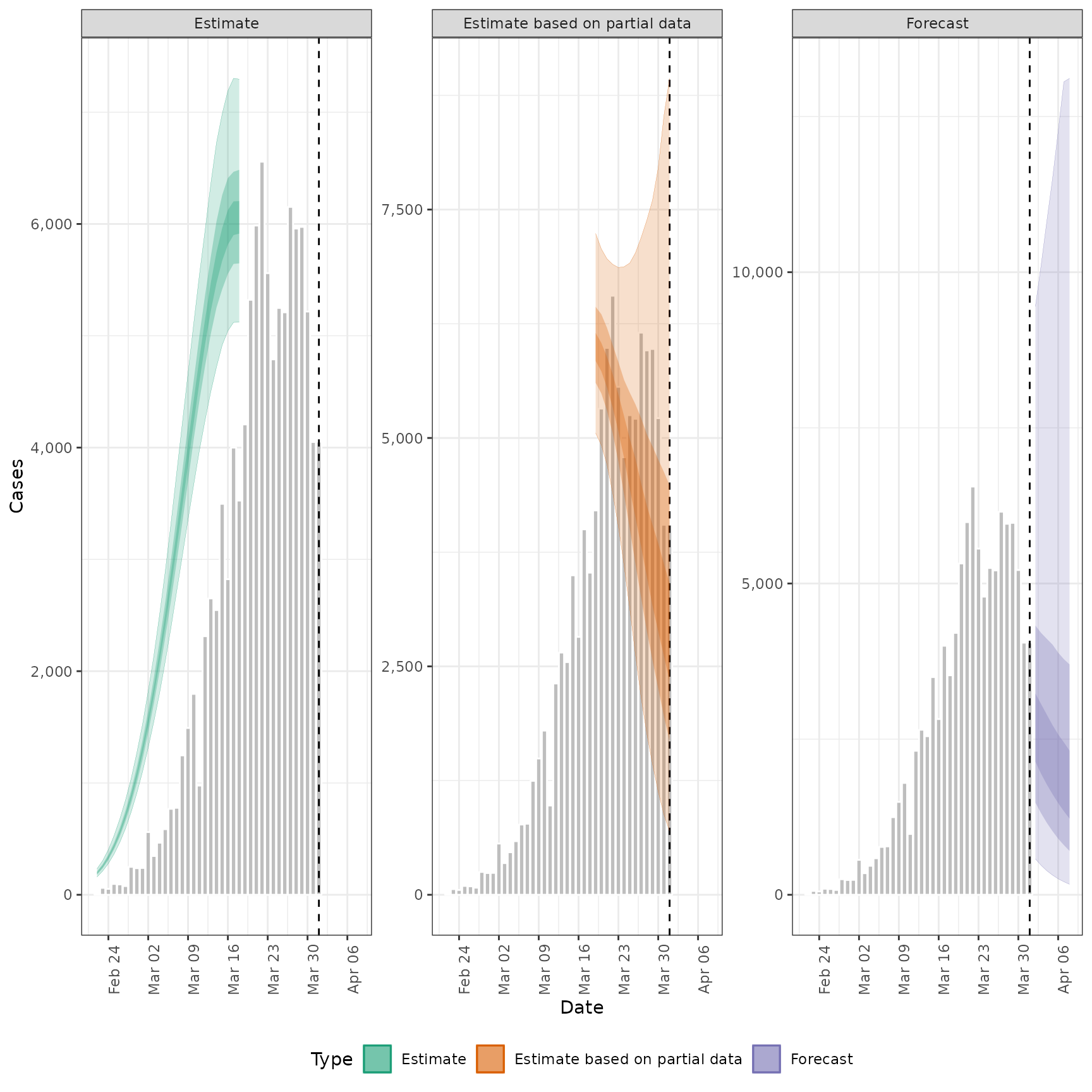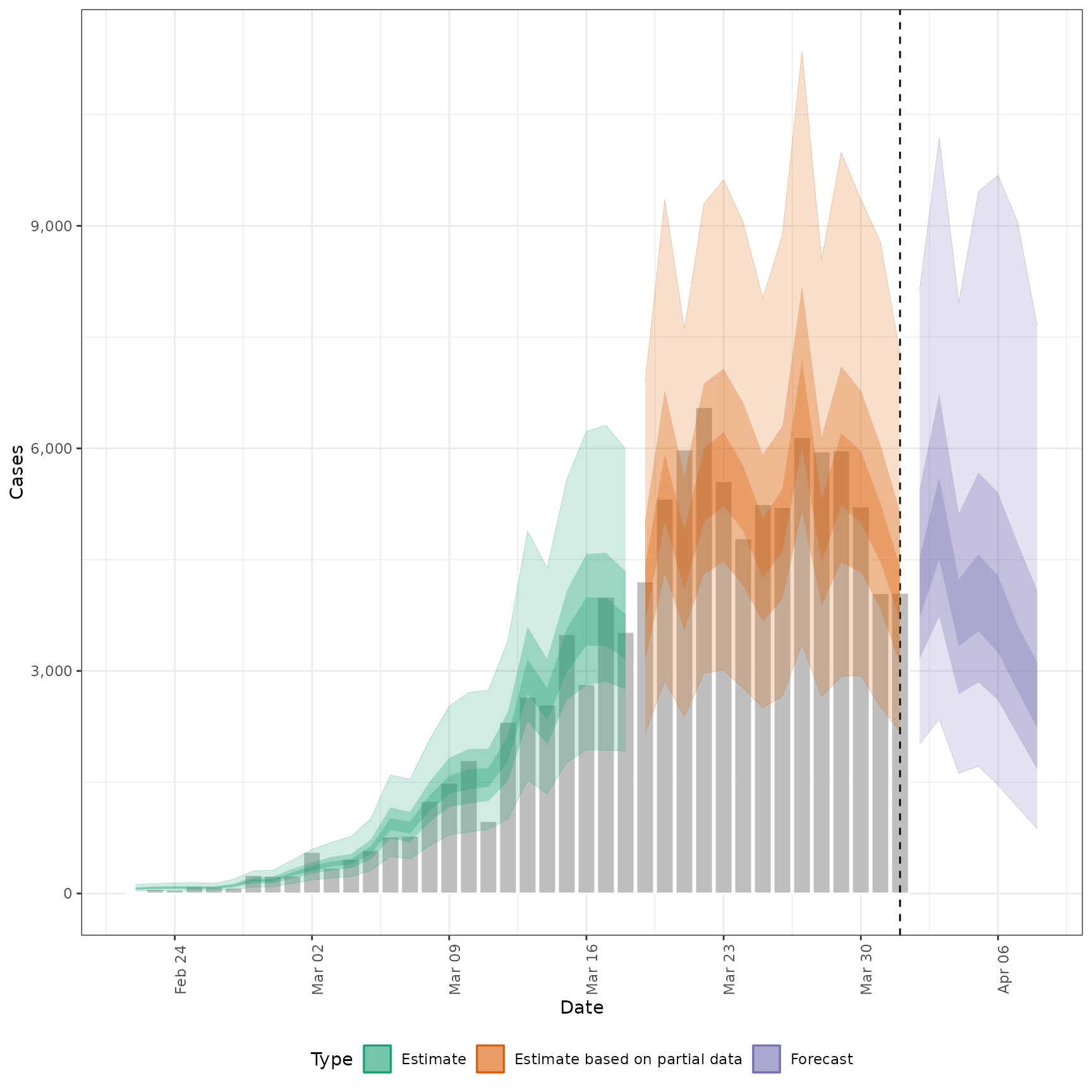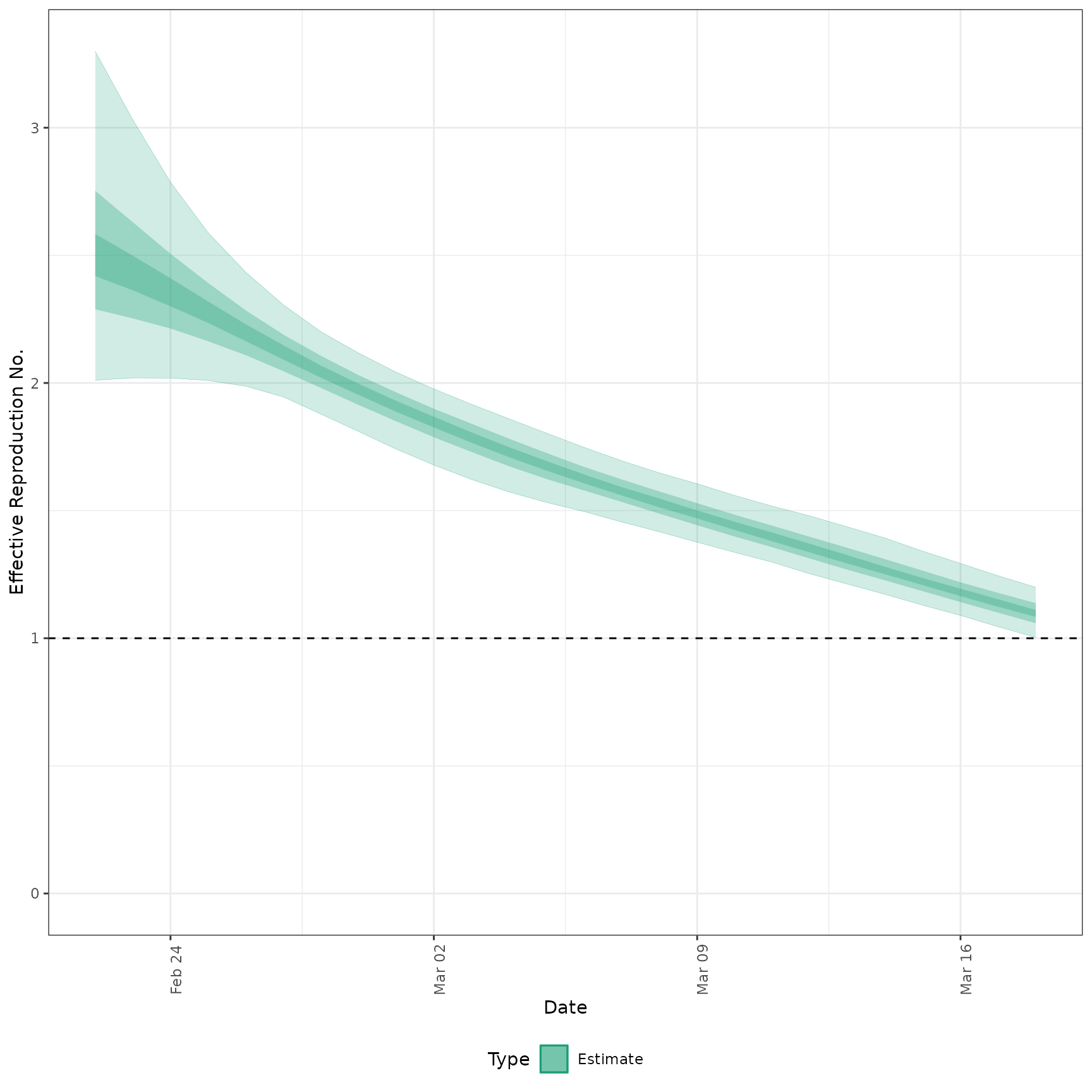Allows users to plot the output from
estimate_infections() easily.
In future releases it may be depreciated in favour of increasing the
functionality of the S3 plot methods.
Usage
plot_estimates(
estimate,
reported,
ylab,
hline,
obs_as_col = TRUE,
max_plot = 10,
estimate_type = c("Estimate", "Estimate based on partial data", "Forecast")
)Arguments
- estimate
A
<data.table>of estimates containing the following variables: date, type (must contain "estimate", "estimate based on partial data" and optionally "forecast").- reported
A
<data.table>of reported cases with the following variables: date, confirm.- ylab
Character string. Title for the plot y axis.
- hline
Numeric, if supplied gives the horizontal intercept for a indicator line.
- obs_as_col
Logical, defaults to
TRUE. Should observed data, if supplied, be plotted using columns or as points (linked using a line).- max_plot
Numeric, defaults to 10. A multiplicative upper bound on the\ number of cases shown on the plot. Based on the maximum number of reported cases.
- estimate_type
Character vector indicating the type of data to plot. Default to all types with supported options being: "Estimate", "Estimate based on partial data", and "Forecast".
Examples
# get example model results
out <- readRDS(system.file(
package = "EpiNow2", "extdata", "example_estimate_infections.rds"
))
# plot infections
plot_estimates(
estimate = out$summarised[variable == "infections"],
reported = out$observations,
ylab = "Cases", max_plot = 2
) + ggplot2::facet_wrap(~type, scales = "free_y")
 # plot reported cases estimated via Rt
plot_estimates(
estimate = out$summarised[variable == "reported_cases"],
reported = out$observations,
ylab = "Cases"
)
# plot reported cases estimated via Rt
plot_estimates(
estimate = out$summarised[variable == "reported_cases"],
reported = out$observations,
ylab = "Cases"
)
 # plot Rt estimates
plot_estimates(
estimate = out$summarised[variable == "R"],
ylab = "Effective Reproduction No.",
hline = 1
)
# plot Rt estimates
plot_estimates(
estimate = out$summarised[variable == "R"],
ylab = "Effective Reproduction No.",
hline = 1
)
 #' # plot Rt estimates without forecasts
plot_estimates(
estimate = out$summarised[variable == "R"],
ylab = "Effective Reproduction No.",
hline = 1, estimate_type = "Estimate"
)
#' # plot Rt estimates without forecasts
plot_estimates(
estimate = out$summarised[variable == "R"],
ylab = "Effective Reproduction No.",
hline = 1, estimate_type = "Estimate"
)
